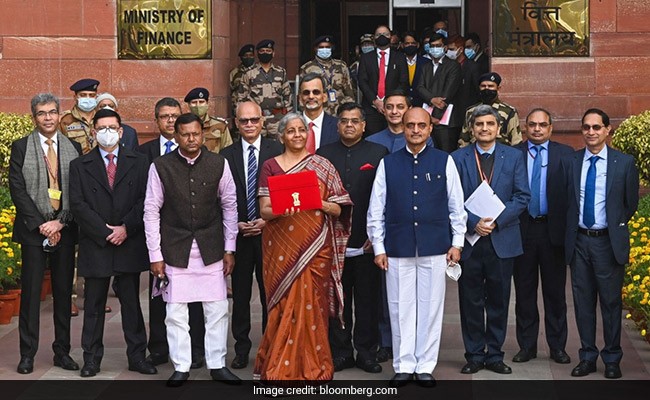Good news in India’s dismal budget

India’s Union Budget, presented earlier this week, is both a presentation of national accounts and the only statement of government policy we’ve received all year. This year, the accounts are made to read disturbingly. The government lacks money and the economy lacks momentum. As a policy statement, however, the budget is far more promising.
The government’s debt program, at more than $200 billion next fiscal year (which begins April 1 in India), is likely to strain financial markets. Meanwhile, debt has skyrocketed since the pandemic began and now hovers around 90% of GDP. Next year’s fiscal deficit will be 6.4% of GDP, much higher than expected. Interest burden has increased by almost 40% in just two years; About half of India’s taxes are now used to pay interest on government debt.
Government response? Save on spending on everything but infrastructure. There is a clear and coherent principle behind this strategy, one that India’s Finance Minister Nirmala Sitharaman outlined in her address to Parliament. The private sector does not invest, so the public sector must do the same and hope that “focuses on” a healthy cycle of investment and growth. The only problem is that the government has been trying this trick for over 5 years and it still doesn’t work.
Massive public works will not revive private sector enthusiasm. What is really needed are new ideas, investable projects, policy continuity – and guaranteed demand. That’s where budgets provide more of the cheery news.
Much of Sitharaman’s speech was devoted to climate action and energy transition. She quoted Prime Minister Narendra Modi only once, stating that he had committed to India at COP26 in Glasgow last year to a low-carbon development path. To start that path, the budget announced a series of green incentives, policies and tools.
More money has been thrown into solar panel production. A policy has been published to set standards for EV battery swaps. Fuel used in older (and more polluting) cars has become more expensive. Grid-linked battery farms will receive preferential loan financing. A “climate action” fund will be established to combine public and private financing.
The amount spent on metro and public transport systems in India’s fast-growing cities has been increased, while proposing “zero-emission zones” in those cities. Finally, to help pay for all of this, the government has announced that it will issue sovereign green bonds at some point next year.
India’s leaders have been anxious for some time, looking for a new narrative that could appeal to the private sector and spur India’s massive growth. They tried to promote export-oriented production but cut their profits by enacting protectionist policies and dragging their feet into reform. They have tried to tout a “Digital India” but have not yet built the skilled workforce such a vision would require.
Now – presumably as a result of a process of elimination – the government has settled on something that might work. For India, climate change is not just an existential threat but a necessary impetus to retool its economy – to create investable projects and meet the needs of the world. Private capital is coveted. When you combine the global ESG boom with India’s push to create specialized funds and a new development finance institution to channel funds into sustainable projects, it’s easy to see how the India’s green direction might also ease capital scarcity a bit.
Most importantly, the government’s commitment to supporting low-carbon sectors – from batteries to solar panel production, electric vehicles to renewable energy production – is now out of the question. argue. In a country where the biggest concern for private investors is a sudden change in government policy that will cost you everything, policy commitment is the only signal that works.
Of course, policy direction and policy action are not the same thing. If sovereign green bonds are to help fill India’s fiscal vacuum, the government will have to be absolutely clear on where the money is going and what the impact of every dollar raised will be on the economy. emission reduction. Incentives for battery farms are all good, but protectionist policies have raised taxes on battery storage systems to around 40%, according to the Financial Times. India’s mighty legacy carmakers have so far cut back on all efforts to mandate more zero-emissions transportation, and they’re likely to do so again.
However, as the possibility of a new, low-carbon growth path is discussed here in Delhi, a sign of optimism can now be detected – an emotion that has been flimsy in the city for a while now. some years. The Indian government may be short of money. At least it’s not out of ideas yet.
(Except for the title, this story has not been edited by NDTV staff and is published from an aggregated feed.)




